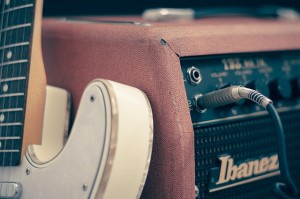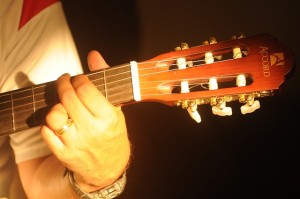One of the great things about being a beginner on the guitar is that you have yet to develop any style so far. Perhaps you will turn into a blues guitarist and learn lots of licks to embellish the basic chord and strum technique. Perhaps you will use lots of slide and twang to get a country sound to your playing. Alternatively, you might go for power chords using an overdrive pedal and an amp for a rock guitar style. However, before you develop to this stage, you need to know the fundamentals so that you have the core skills necessary to progress. Sites like Guitar Tricks can help novices to develop these skills and to make headway with their chosen style. Along with this, one of the best ways of building confidence is to learn to play songs you already know. Better than simply changing between chords in a series of dry exercises, learning easy beginner guitar songs helps you to acquire finger skills in a fun way which means you make progress every practice session. It helps if you can sing a bit, too, but this is not essential so long as you can hear the melody in your head. Once you are up to speed with a song, you can always play along with a recording of it, anyway.
Before embarking on learning a few basic songs, it is worth remembering that two or three chords are the mainstay of many highly successful tracks. Just because a song has a relatively simple harmony structure of only a few repetitive chords does not mean that it is a basic song – far from it. Often, it is the way songwriters get something new from tried and tested song structures that marks them apart. Easy songs to learn on the guitar can sound very professional with a bit of practice, so don’t be put off because the songs on this list don’t seem sophisticated at first glance. Quite the reverse is often the case!
-
Let it Be
Originally written for a piano accompaniment, this Beatles song is a great sing along number to have in your repertoire. Usually played in the key of C major, you will need to be able to switch between C, G, F and A minor at a moderate tempo. To add sophistication to your playing, try adding Am/G in a run down during the chorus. This means playing A minor with the bass string sounding the note of G (third fret on your E-string), creating a pleasant transition prior to the chord of F which comes next.
-
505
This Arctic Monkeys song is the easiest of all their tracks to learn and requires you to only know two chords, D minor and E minor. Need to learn a song rapidly to fill up a set? This is the one to go for!
-
Don’t Do Me Like That
This Tom Petty number runs through exclusively major chords in the verse. They are G, F, C and D. In the chorus, you will also need Em. In the bridge, you will have to learn how to switch between G7 and C7 and there is also a single C minor chord to play which includes the accidental note of E flat, bringing a new flavour to the song. Beginners should treat C minor just like B minor, but slid up one fret.
-
Achy Breaky Heart
This song needs just two chords to play. It sounds great with open chord positions, so A major and E major are perfect for this mid tempo song by Bill Ray Cyrus. Played in a 4:4 time pattern, you can use Achy Breaky Heart to experiment with slightly differing strumming patterns to build into the performance with a country twang, as you go.
-
Knockin’ on Heaven’s Door
This Bob Dylan song is probably the easiest of all his memorable tunes to learn and the chord sequence has been used many times since for other songs, so you can re-use what you have learnt once you master it. You will need to learn G major, C major and D major along with A minor. For some subtle variation in the song, try using Am7 from time to time in place of a normal A minor. To play this chord, remove your ring finger from the fret board when playing A minor so that a G note is sounded along with the usual notes of A, E and C.
-
Sing
Needing you to only play two chords, this minor key song by Ed Sheeran can be played by beginners even if they have not yet master barred chords. All you need is Em and Am to be able to play it. Just use a capo on the fourth fret to transpose the song to the correct key, if you want to play along with the original. Use the side of your strumming hand to stop the strings after you strike them to get the funky groove sounding just right.
-
I’m a Believer
A great song to busk along to, I’m a Believer is one of Neil Diamond’s biggest hits as a songwriter, even though it was originally released by the Monkees. The verse requires you to play G, C and D, but for the chorus you will also have to play the chord of F major. As the song is quite quick, work on your chord transitions before perfecting your strumming patterns.
-
Mull of Kintyre
This song by Wings is a good one for beginners because it has simple chords in its construction, using just A, D, E and G for the most part, although adding A7 and D7 will help it to sound right. However, because it is in 3:4, it has a lilting quality which many rock songs don’t offer. Learning this song will help you to improve rhythmically by mastering waltz time.
-
Three Little Birds
Perhaps Bob Marley’s best know song, this one has an offbeat skanking rhythm which, like Mull of Kintyre, will also help you to master new rhythmic ideas. To play it, all you will need to know are the major chords of A, D and E.
-
Coconut
This Harry Nilsson song is superb for learners who want to gain confidence because it contains no chord transitions whatsoever. All you need to know to play the song is C7. Sometimes play it without hitting the bass E-string and sometimes do, with your finger on the third fret to sound a G note. That’s it!


